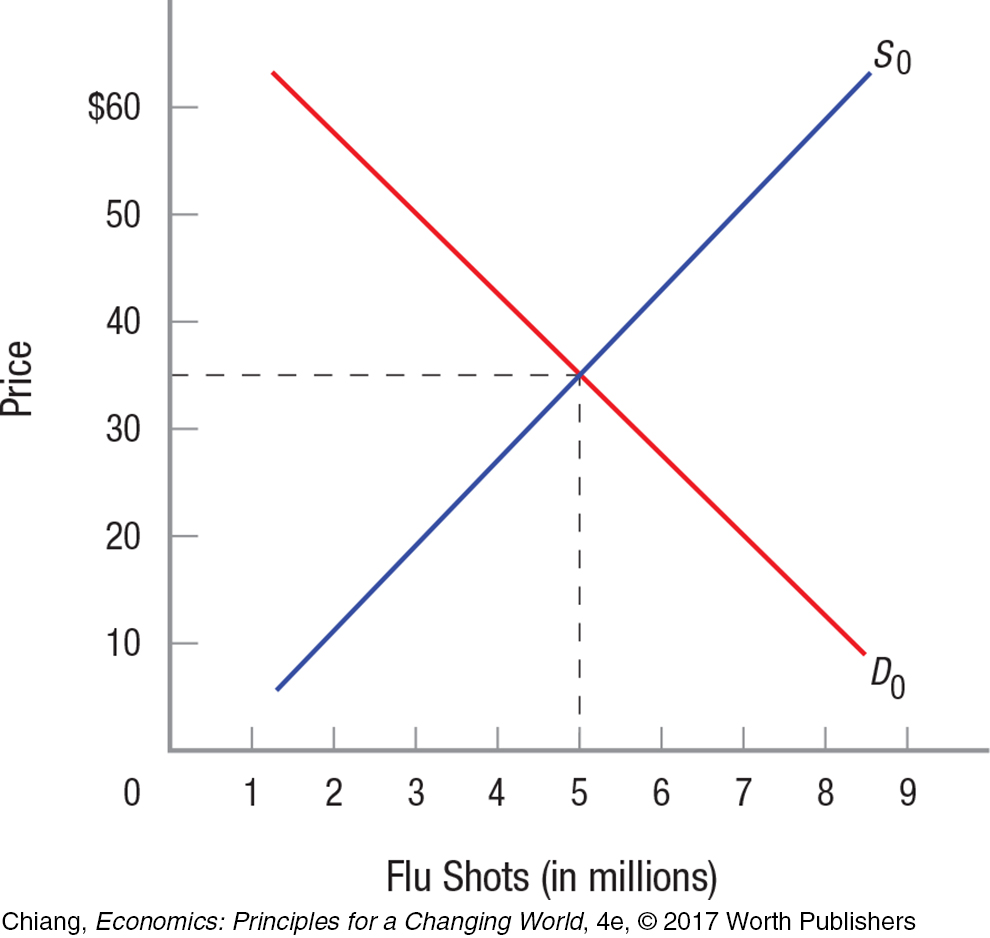QUESTIONS AND PROBLEMS
Check Your Understanding
Question 13.1
1. When trying to estimate the external benefits of a college education, what kinds of specific benefits would you include?
Question 13.2
2. How might the government use market forces to encourage recycling?
Question 13.3
3. What makes public goods different from private goods?
Question 13.4
4. Why wouldn’t a rural highway in Montana, Freeway 405 in Los Angeles, and the New Jersey Turnpike (toll) all be classified as public goods? Which would be most like a public good and which would be least?
Question 13.5
5. Assume that you are convinced that if something isn’t done now, global warming is going to create extensive problems and damage by the end of this century. If you were preparing a cost-
Question 13.6
6. What is the “tragedy of the commons”? How can it be mitigated?
Applying the Concepts
Question 13.7
7. “Internalizing” the cost of negative externalities means that we try to set policies that require each product to include the full costs of its negative spillovers in its price. How do such policies affect product price and industry output and employment? Are these kinds of policies easy to implement in practice? How has globalization of production affected our ability to control pollution?
Question 13.8
8. As a way to increase the funds for wildlife conservation, why don’t we just auction off (say, on eBay) the right to name a new species when it is discovered? Why not do the same for existing species?
Question 13.9
9. Anecdotal studies have shown that when given a choice between paper towels and an air dryer in a public restroom, more people choose paper towels to dry their hands. Why would people rationally choose paper towels, a method that is potentially more harmful to the environment? Are there some disadvantages to providing air dryers as the only option, as in many countries throughout Europe?
Question 13.10
10. Garbage dumps are a particular source of a potent global-
Question 13.11
11. The Presidio, previously a military base in San Francisco, is now a national park. It sits in the middle of San Francisco on some of the most valuable real estate in the United States. Congress, when it created the park, required that it rehabilitate the aging buildings and be self-
Question 13.12
12. The expansion of health care coverage to include more uninsured persons creates both external costs and external benefits. List two such costs and benefits from expanding health care coverage. Then, provide two reasons why health care can be viewed as a public good.
In the News
Question 13.13
13. In the Canadian province of Northern Territories in the Arctic, ice roads (pathways for cars and trucks made on frozen lakes) are an important means of transportation during the winter months, when trucks are able to reach remote mines that generate many jobs. However, in 2015, the 248-
Question 13.14
14. Over a two-
Solving Problems
WORK IT OUT  | interactive activity
| interactive activity
Question 13.15
15. Suppose the market supply and demand for flu shots are shown in the figure. Not taking into account the external benefits from flu shots, what are the equilibrium price and quantity of flu shots? Now suppose that every flu shot generates $10 in external benefits (from others being less likely to get sick). Show how this positive externality affects the graph (draw in a new curve). Taking into account external benefits, what would be the new equilibrium price and quantity of flu shots?

Question 13.16
16. Suppose that the individual demand schedules for Al and Jane, the only two residents on a quiet city street, are shown in the table for speed bumps aimed at slowing cars passing through. In a single diagram, plot Al and Jane’s individual demand curve, and then plot the total demand curve for each unit of the public good.
| Al | Jane | ||
| Quantity | Marginal benefit | Quantity | Marginal benefit |
| 1 | $50 | 1 | $100 |
| 2 | $25 | 2 | $50 |
| 3 | $10 | 3 | $25 |
| 4 | $5 | 4 | $10 |
 USING THE NUMBERS
USING THE NUMBERS
Question 13.17
17. According to By the Numbers, rank the generation of the three most common forms of renewable energy from the least to the greatest in the year 2014.
Question 13.18
18. According to By the Numbers, which two waste products are most recovered (recycled) by percentage, and which two waste products are least recovered?